SaaS
“Zinc-HIT Screening” quickly and more precisely screens HIT candidates through AI-based simulation similar to the real 3D structures implemented by numerous calculations. Even without reference structure data, no problem in discovering HITs by generating own multiple templates virtually. A proven platform in various therapeutic areas and protein families, including kinase, GPCR, and nuclear receptors. Discover new scaffolds from libraries of up to 1 billion compounds.
Do you want to screen HIT compounds quickly in a wider library that is more diverse than the current way?
STB supports discovering novel and more than just drugs from libraries of up to 1 billion compounds.
Have you trouble due to the unclear binding mode of newly screened drugs?
STB offers HIT candidates with a clear binding mode as best-pose prediction between target and compound.
Are you looking for HIT compounds that are easy to follow up on development?
STB provides ready-to-purchase HIT candidates, reducing the time and cost for synthesis for verification.
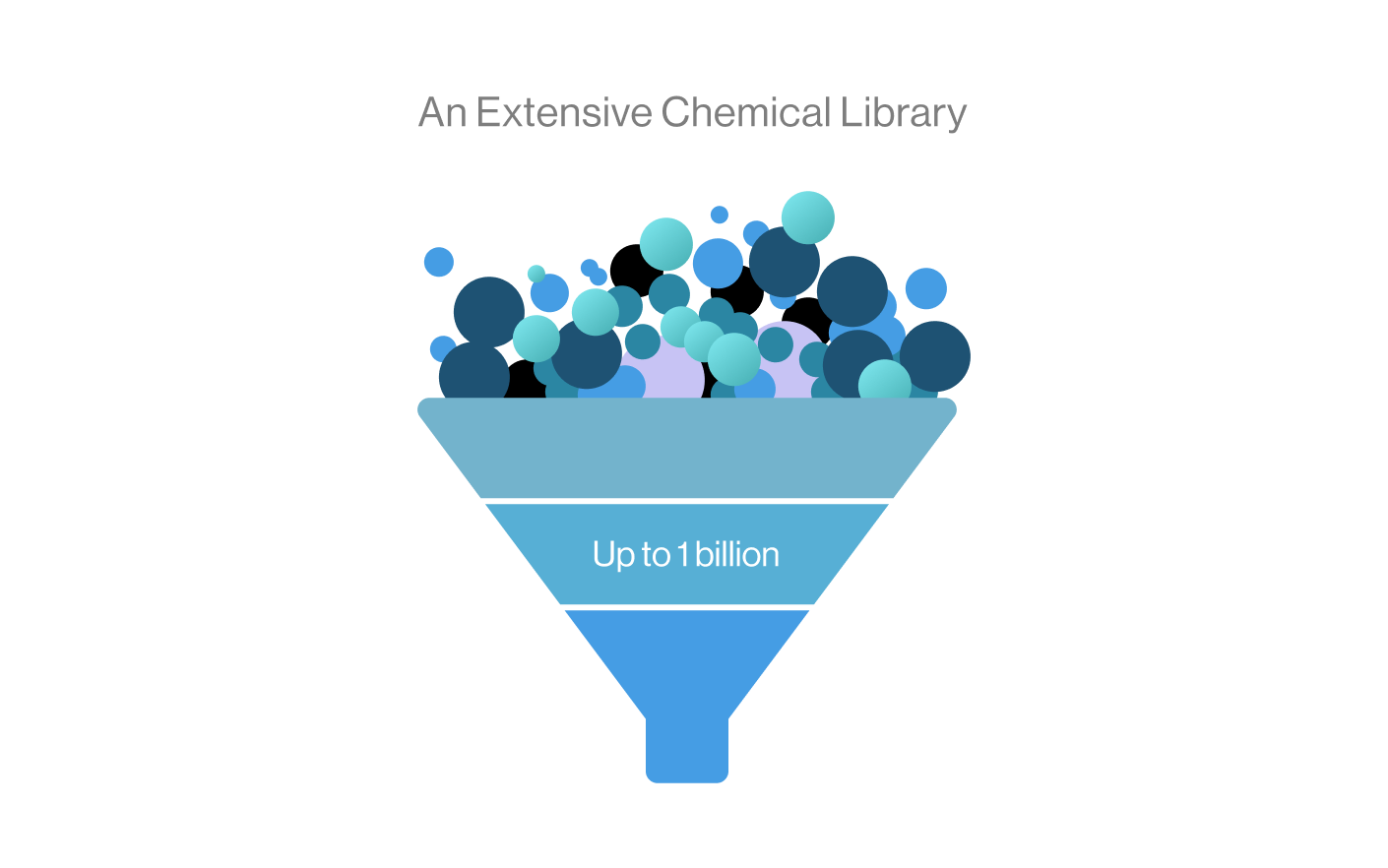
AZINC Library
Input : Target protein info. & Ref. drug info. (if available)

BDeep Learning Screening
Input : 50M Cpds list & Target 3D structures
Output : Top ranked 500 Cpds & poses info.
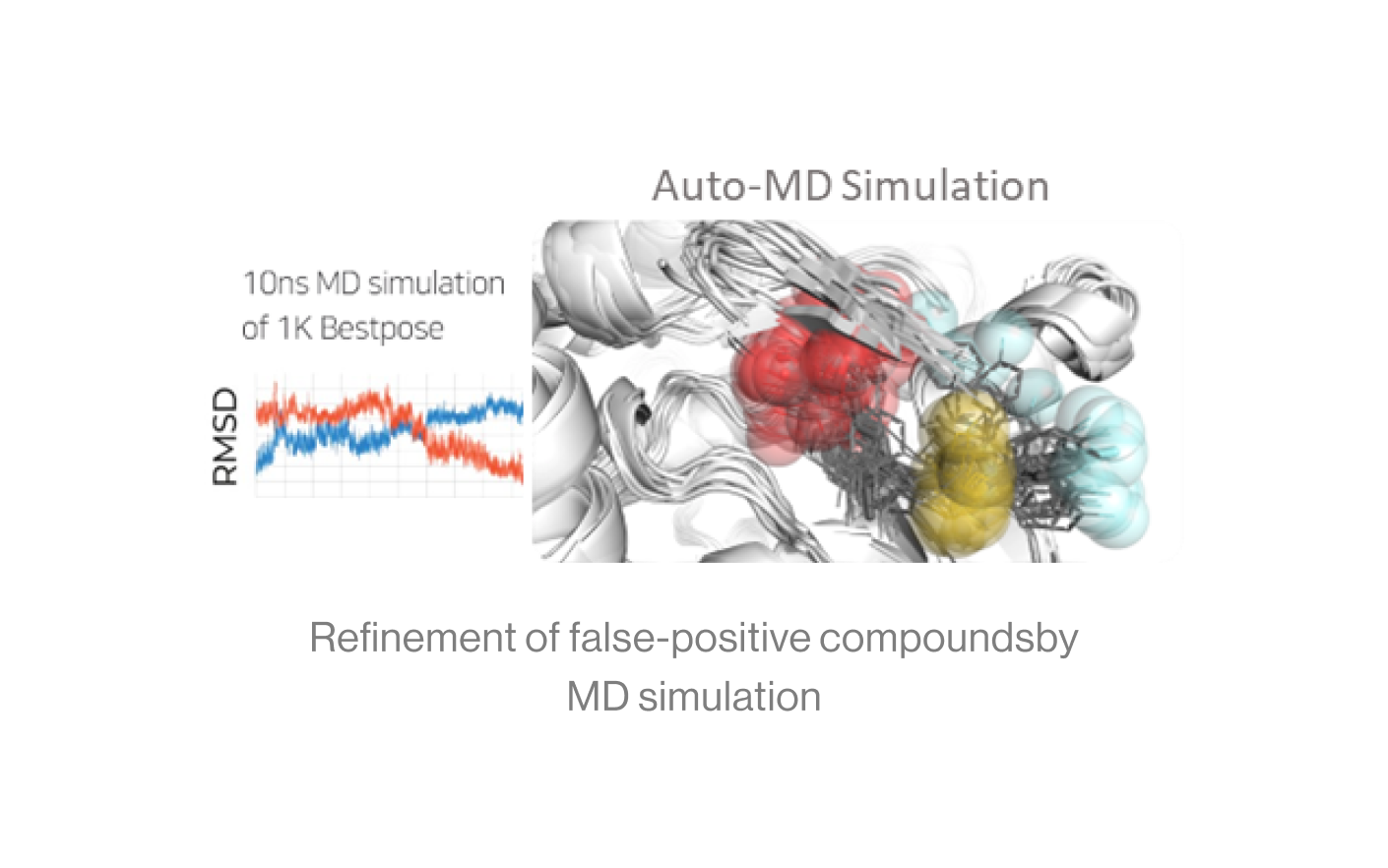
CFalse Positives Filtering
Input : Poses of the top ranked 500 Cpds
Output: List of 200 Cpds with false positives filtered

DTechnical Performance
Input: The screening score of 200 Cpds
Output : Priority of ~200 Cpds list
Auto-Hit Discovery by DeepMatcher®-Hit
Flow diagram of Hit discovery by DeepMatcher® Compounds are prescreened through three steps before being docked in a pocket of the target. Once the optimal pose is selected, the MD simulation is finally performed in a total of five steps.

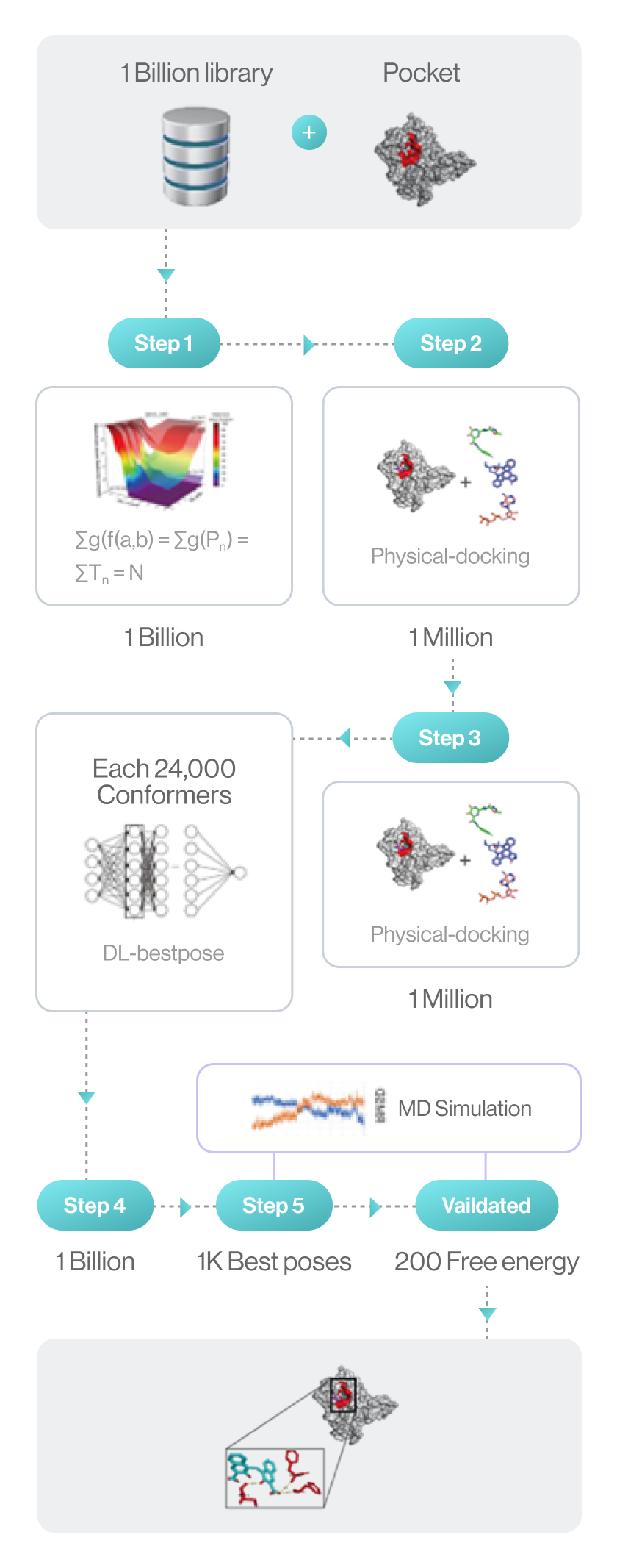
Syntekabio launched STB CLOUD in late 2022, a suite of cloud-based proprietary platforms, to meet the unmet needs of these cost-conscious innovators seeking reliable yet affordable new drug candidate discovery services. STB CLOUD screens 1 billion purchasable compounds based on unique featurization method for 3D information-based data and 1 million potential candidate compounds
One million chemicals selected from a library of 1 billion compounds was docked into target 3D structure using command line interface (CLI) based in-house structure manipulation package.
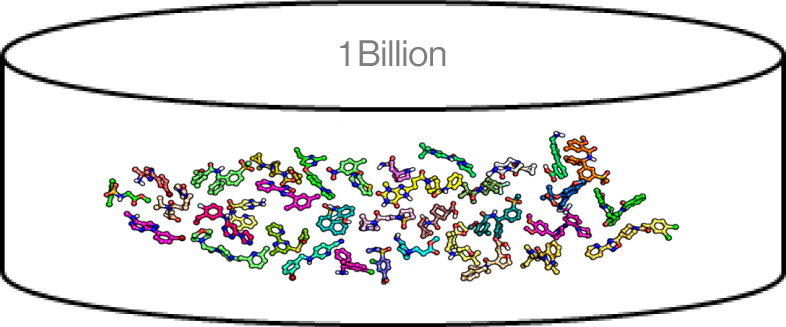
Figure2. Chemicallibrary

Figure3. Methods for centroidal atom vector-based fast protein-ligand docking. After docking, three atom-vector based rotations along the core ring. It rotates while moving 1000 times in each revolution and then, generates a protein-ligand interaction (PLI) score
The diagram below shows the interaction between a protein and a ligand in the pocket as a grid box, a 3D-CNN based intermediate stage of repeated max pooling and 3D convolution, generating feature maps, and representing bonds. Here, the starting grid box (48) and kernel size (3*3*3) are used. The density function is based on the geometry of adjacent bonds of two atoms. Therefore, the sum of bonds is defined as binding affinity.
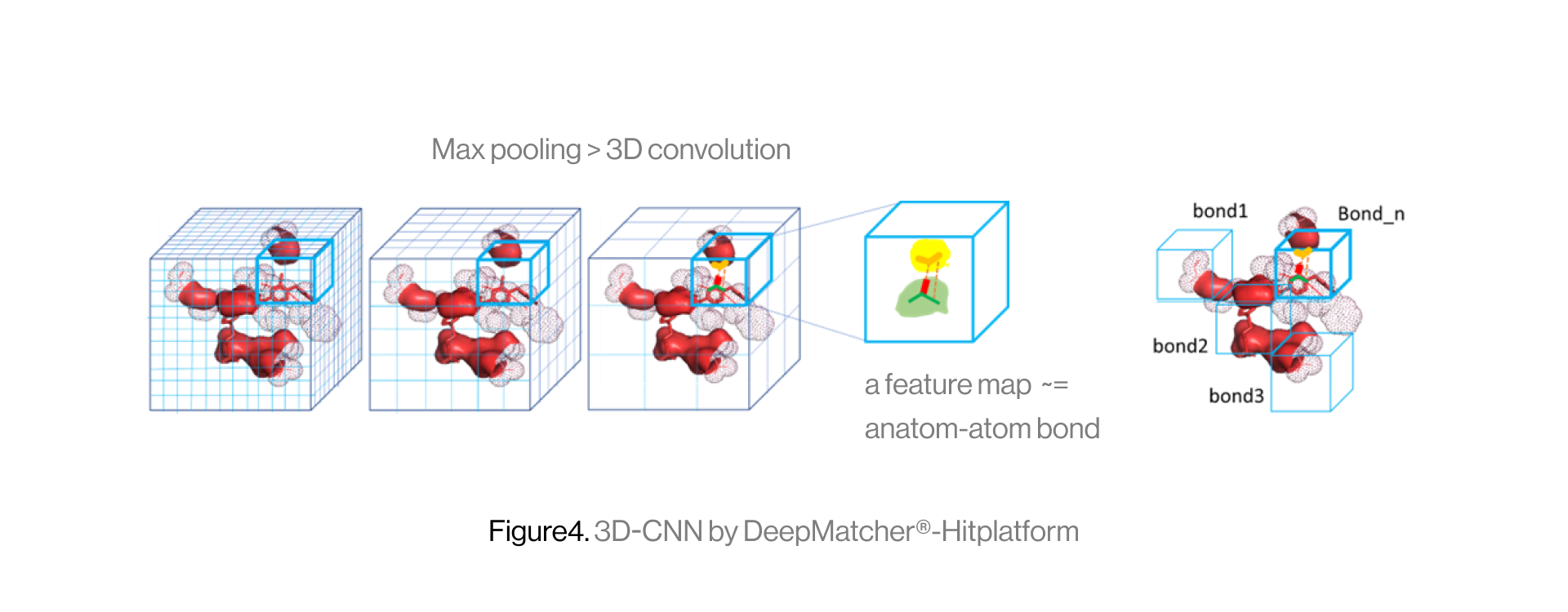


Figure5. Auto-MD simulation
Auto-MD Simulation
Syntekabio's fully automated MD simulation algorithm performs molecular dynamics simulations (10 ns) in explicit water box for 1,000 protein-ligand complexes.
The diagram shows an example of running continuously from a dead step during 1,000 MD simulations. If one runs 1000 MD simulations at once, a large number of simulations may crash and die in certain cases. However, in the automated environment, it proceeds by saving the checkpoint and resume from the saved point.
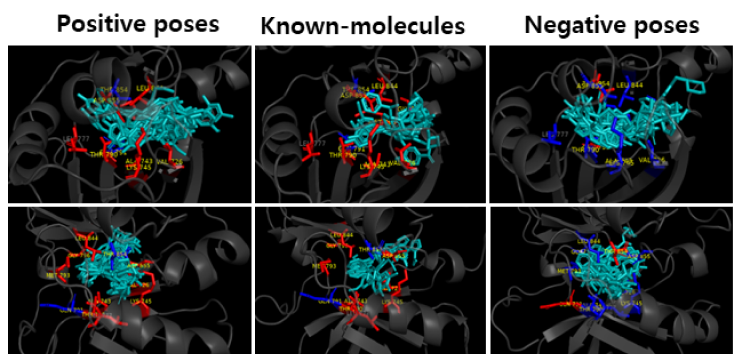
Figure 6. Comparison of AI-hit positive andnegative
predictions with known Molecules.
Key-Residue Analysis
The known molecules and the predicted molecules with EGFR protein were compared to see if the functional (Hinge, DFG) and conformational keys (G-loop, M766 in c-Helix) were well matched. In the case of positive prediction, the functional and conformational keys were well matched, whereas in case of negative, there were few matched residues. (Red: strong binding, Blue: weak binding)
CLK2, also known as CDC-like kinase 2, is a protein kinase that plays a role in the regulation of pre-mRNA splicing. Presented 89 candidate compounds using Deepmatcher®-Hit as a result of structure analysis using tanimoto coefficient with KNN algorithm. a) It was confirmed that 89 compounds were divided into 7 groups. b) Purchasable compounds were biochemically confirmed their inhibition activities. Three compounds of 74 purchased candidates (yellow circles) inhibited enzyme activity of CLK2 more than 50%. c) The growth inhibitory effect of each cancer cell by treatment with STB-C070, STB-C070-D157 and reference compounds were analyzed using WST-1 assay. GI50 was calculated from the 8-point dose-response curves by triplicate test.
a) DeepMatcher® Result analysis
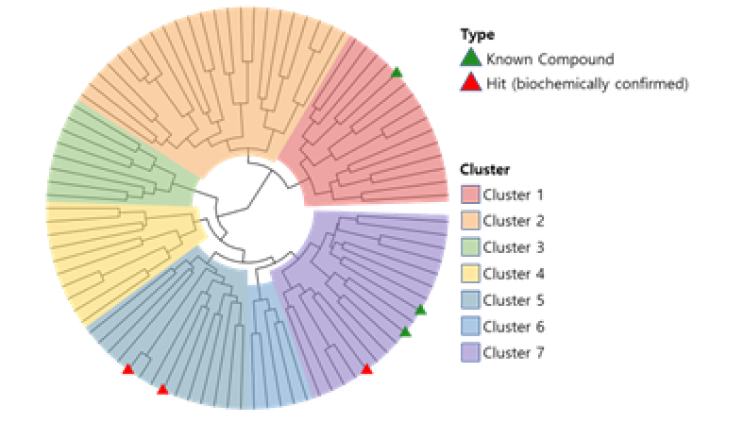
b) Biochemical assay result of AI-hits

c) Cell-based assay result of AI-hits
